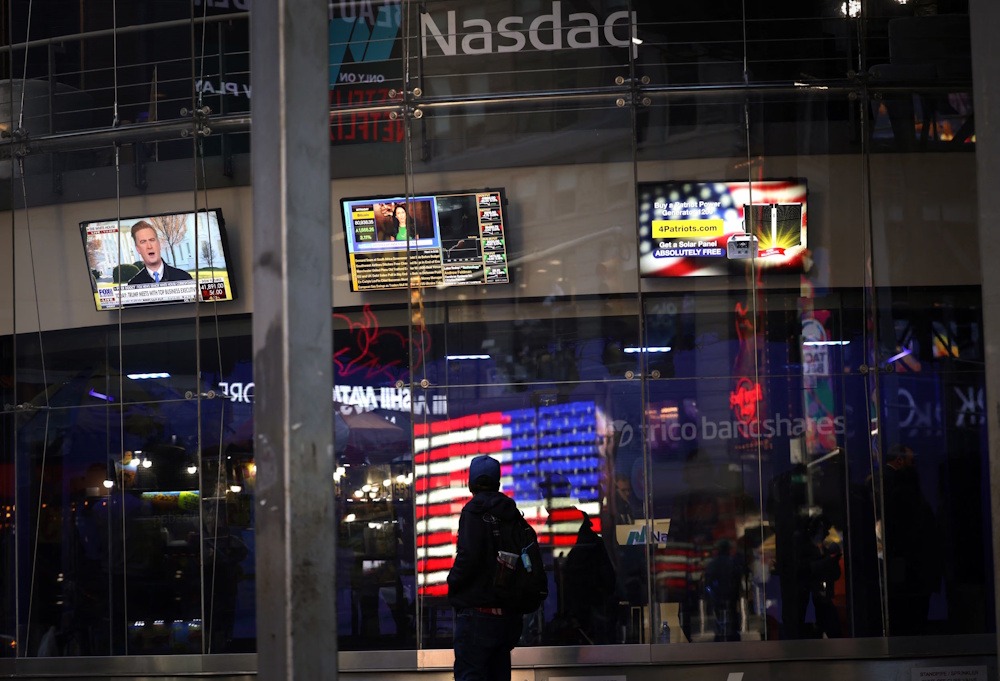
Nasdaq saw a drop of 0.5%, which equates to a loss of 33.25 points, finishing at 6,604.72 points. Stocks in the healthcare, consumer discretionary, materials, and utility sectors showed the least strength. The Health Care Select Sector SPDR experienced a decline of 1.7%. The Consumer Discretionary Select Sector SPDR experienced a decline of 1.4%. The Materials Select Sector experienced a decrease of 1.3%, whereas the Utilities Select Sector saw a decline of 1%. Ten out of the eleven sectors of the benchmark index ended the day in the red. The tech-heavy index experienced a decline of 0.5%, equating to a decrease of 113.16 points, concluding the session at 22,384.70. The volatility index, often referred to as the fear gauge, increased by 3.64%, reaching a level of 16.74. On the exchange, there were more decliners than advancers, with a ratio of 3.11 to 1. On the Nasdaq, a ratio of 3-to-1 suggested a tendency towards declining issues.
On Thursday, the trading volume hit 19.58 billion shares, exceeding the 20-session average of 17.99 billion shares. On the Nasdaq, there were 1,166 new highs and 3,502 new lows reported. On the exchange, there were 110 new highs and 109 new lows. Concerns are growing about the revenue strategies linked to the significant funding provided by large tech companies in AI businesses. Companies in the technology sector, especially those focused on artificial intelligence, have played a major role in the overall market surge seen in recent years. The bull run continues this year, with hyperscalers ramping up data center constructions to meet the growing demand for cloud services. Nonetheless, firms that have significantly incorporated AI into their final offerings have transformed into multi-baggers over the last three years, with values surging over 250% during this period. Investors are growing more uneasy about the extraordinary valuations of these AI companies after recent events that have dampened their outlook. Shares of Oracle experienced a decline of 5.6% on Thursday, marking the third consecutive session of decrease. The firm has seen a drop of more than 16% from its latest high. Additionally, the shares of the company experienced a decline of 4.4%. Oracle has a Zacks Rank of #3, suggesting a Hold position.
The comprehensive list of today’s top-ranked stocks can be found here. The Federal Reserve lowered interest rates by 25 basis points last week, pointing to worries about a shrinking labor market. The central bank suggested that there may be two more rate cuts, each by a quarter basis point, before the end of the year. Nonetheless, the Federal Reserve maintained its assertive stance, suggesting that the central bank needs to consider inflation worries alongside a shrinking labor market before deciding on the upcoming rate cut. On Thursday, Chicago Fed President Austan Goolsbee shared his perspective that the central bank should proceed with caution before making the next rate cut, considering the persistent worries about inflation. This development comes after new data showed a decrease in jobless claims by 14,000, bringing the total to 218,000 for the week ending September 20. Current market expectations indicate an 83.3% probability of a 25 basis-point rate cut in October, a decrease from the 92% observed on Wednesday. The Labor Department announced that jobless claims reached 218,000 for the week ending Sept. 20, showing a decrease of 14,000 from the previous week.
The four-week moving average was recorded at 237,500, showing a decrease of 2,750 from the adjusted average of 240,250 noted in the previous week. Continuing claims stood at 1,926,000, showing a decrease of 2,000 from the previous week’s adjusted total of 1,928,000. The 4-week moving average was recorded at 1,930,000, showing a decrease of 4,500 from the previous week’s adjusted average of 1,934,500. Reports says that existing home sales reached 4 million units on a seasonally adjusted basis in August, showing a slight month-over-month decline of 0.2%. However, it saw a 1.8% rise compared to the same period last year. The third and final estimate revealed that U.S. GDP grew by 3.8% in the second quarter of 2025, rebounding from a contraction of 0.5% in the previous quarter and surpassing the expected rise of 3.3%.
